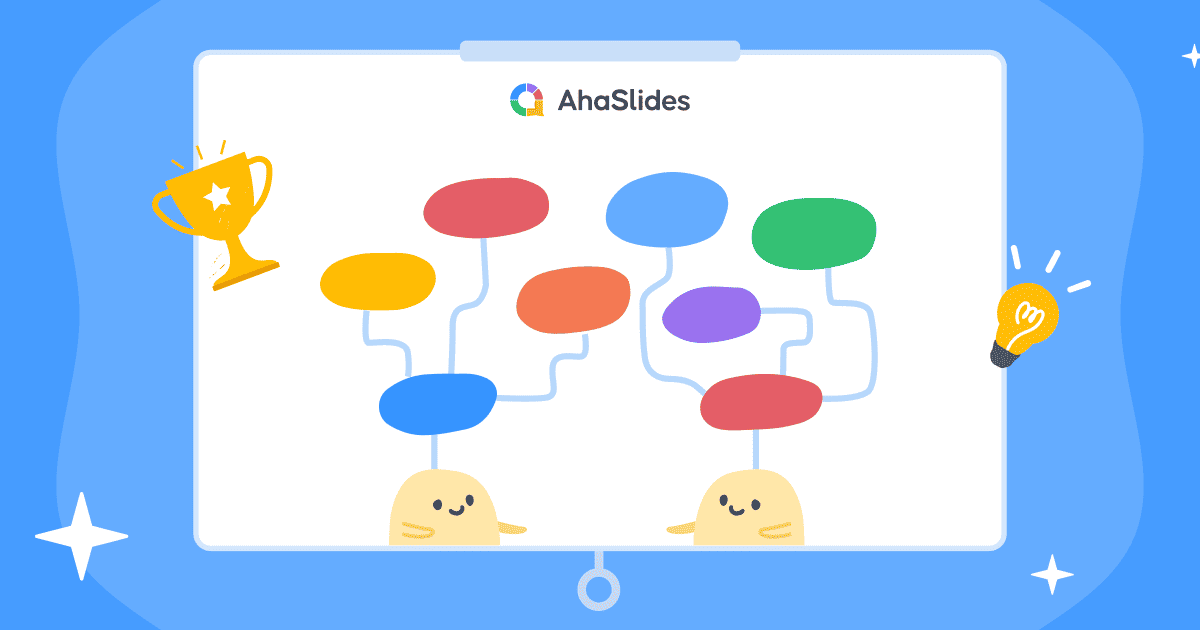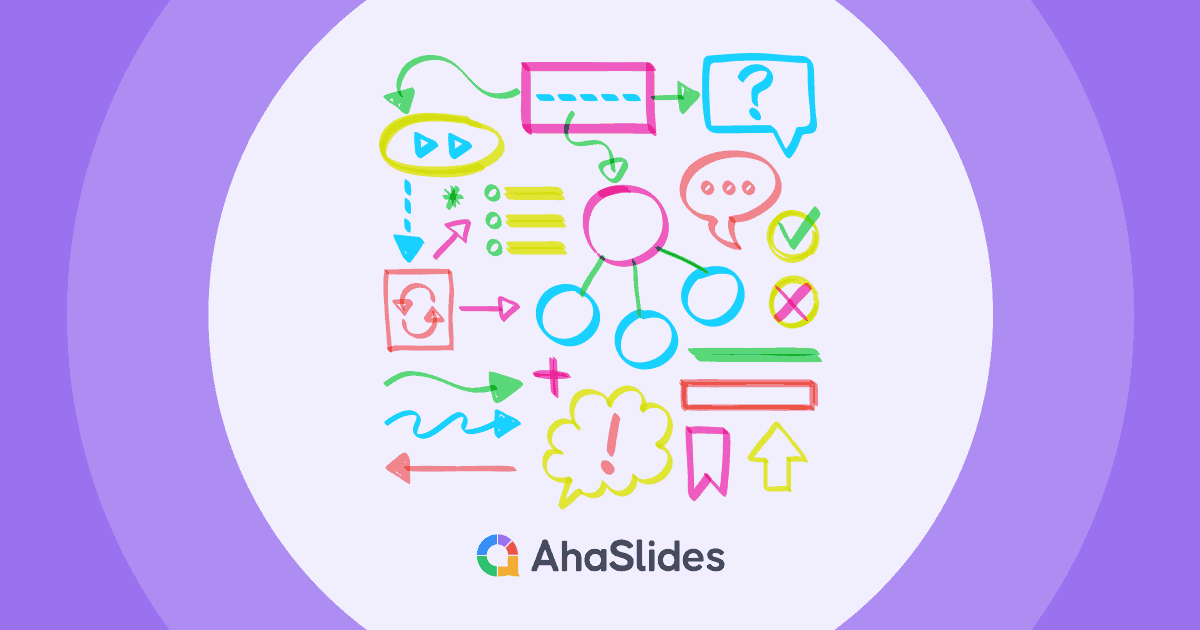你可能以前也遇過腦力激盪的難題。那麼,讓我們來看看11個替代方案 頭腦風暴圖 下面!
在腦力激盪會議中,每個人都會陷入一片寂靜。這更像是一種思維障礙,所以通往彼岸的奇妙想法,看起來就像是一段漫長的旅程。
下次你去那裡的時候,試試幾種不同的腦力激盪圖。它們是從完全不同的角度解決問題,從而打破僵局的最佳方法。
它們可能是在您的團隊中釋放真正生產力的關鍵,以及一些非常好的圖表創意。
目錄
您可以查詢 11 種備選的腦力激盪圖 下面!
- AhaSlides 的參與技巧
- 什麼是頭腦風暴圖?
- #1 – 腦力激盪
- #2 – 問題風暴
- #3 –氣泡圖
- 4. SWOT分析
- 5. PEST分析
- #6 –魚骨圖
- #7 – 蜘蛛圖
- #8 – 流程圖
- #9 – 親和圖
- #10 – 星爆
- #11 – 逆向腦力激盪
- 常見問題(FAQ)
AhaSlides 的參與技巧
除了腦力激盪圖之外,我們來看看:
- 創意板| 免費線上腦力激盪工具
- 14 頭腦風暴的最佳工具 2024 年在學校和工作中
- 指南 集體頭腦風暴 2024 年(+10 優點和缺點)
- AhaSlides 隨機團隊產生器
- AhaSlides 線上測驗創作者
- 舉辦免費現場問答
什麼是頭腦風暴圖?
我們都知道, 頭腦風暴 可以是一個優秀的協作工具,鼓勵討論和產生想法,但究竟是什麼 頭腦風暴圖?
頭腦風暴圖就是這些 不同形式的頭腦風暴其中一些你可能已經知道了。當然,還有超流行的 思維導圖,但還有很多其他人有潛力釋放偉大的想法, 特別 當你運行 虛擬頭腦風暴.
試過 SWOT 分析嗎? 魚骨圖? 逆向頭腦風暴? 使用這些不同的頭腦風暴圖可以為您和您的團隊喚起不同的思維方式。 它們可以幫助您解決問題並從不同的角度思考問題。
你可能聽說過我們下面列出的腦力激盪圖,但在接下來的幾次會議中,不妨試試看。你永遠不知道哪一張圖能帶來意想不到的驚喜…
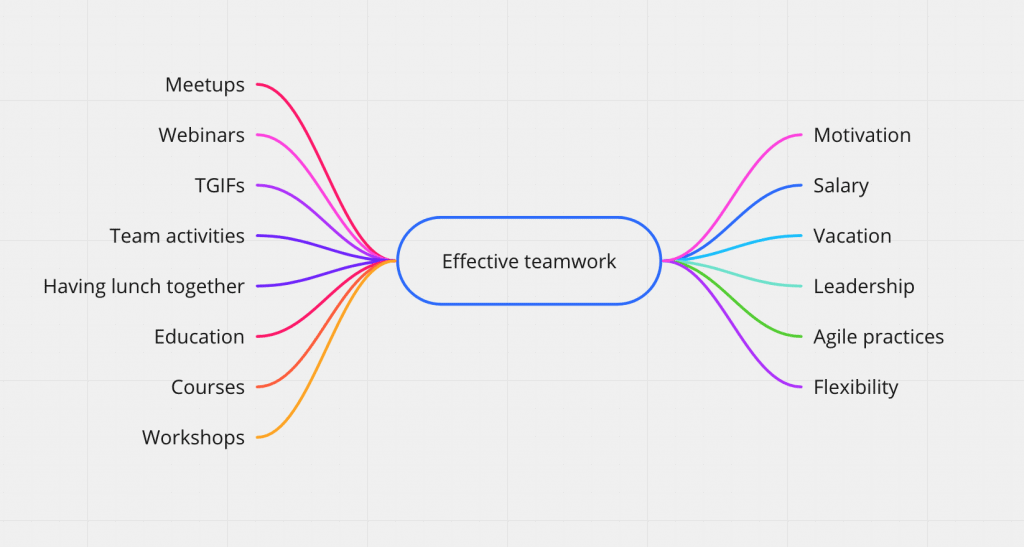
思維導圖的 11 種替代方案
#1 – 腦力激盪
腦力寫作 是一款出色的腦力激盪圖,鼓勵獨立思考和快速構思。它非常適合快速創建協作且多樣化的想法集。使用它,您可以鼓勵集體思考,同時又不影響對主題或問題的獨立解讀。
腦力激盪法可能對團隊中的每位成員都很有效,即使是那些不敢公開討論自己想法的人也能適用。因為它不需要太多的口頭交流,但仍然可以加強團隊合作。
以下是腦力寫作通常的工作方式:
- 向小組提出問題或主題。
- 給你的小組幾分鐘時間,讓他們獨立寫下他們對該主題的所有想法。
- 一旦時間到了,他們會將自己的想法傳遞給其他人,他們將閱讀筆記並添加自己的想法。
- 你可以重複幾次。
您可能會發現,閱讀他人的文章可以激發新的想法和方向,並且最終您會得到一套多樣化的想法。
這有一種變體,稱為 6-3-5 腦寫,這被認為是小團隊貢獻和產出的最佳平衡。 它涉及一個由 6 人組成的團隊在 3 分鐘內產生想法,循環重複 5 次。
#2 – 問題風暴
有時,產生具體的想法和答案可能會很有挑戰性——尤其是當你仍處於一個過程的早期階段時。
問題風暴(或 Q風暴) 專為這種情況而設計。 通過問題風暴,人們面臨提出問題而不是想法或答案的挑戰。
- 採取一個中心主題/問題或核心思想。
- 作為一個小組(或單獨)提出一些源於這個中心思想的問題——這就是問題風暴。
- 然後,您可以從開發的一組問題中查看每個問題的解決方案或想法,這些解決方案或想法通常可以更有效地回答原始問題。
問答式教學是教育的絕佳工具。它挑戰學生的知識,並鼓勵更廣闊的思考。問答式教學的形式非常適合課堂協作學習,並能為學生提供有趣、新穎的學習方式。 在課堂上使用頭腦風暴.
您可以使用一個 腦力激盪圖表製作器 啊哈幻燈片 讓全體工作人員用手機回答他們的問題。 之後,每個人都可以投票選出最適合回答的問題。
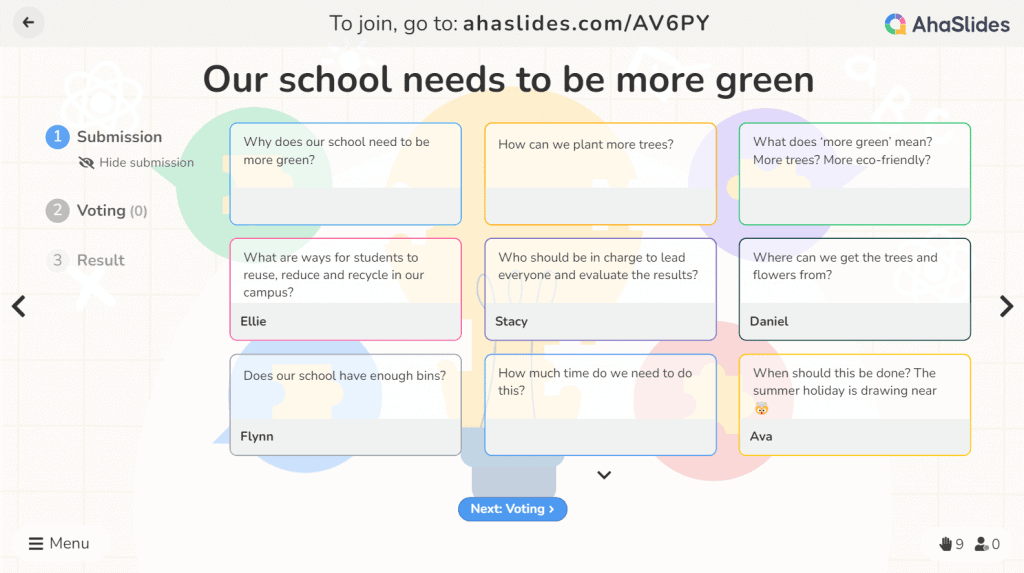
#3 –氣泡圖
氣泡圖類似於思維導圖或頭腦風暴,但它提供了稍微更大的靈活性。 它是學校裡的一個很好的工具,老師們正在尋找新的方法來幫助孩子們擴展或 用遊戲探索他們的詞彙 和頭腦風暴圖。
氣泡映射的主要缺點是,有時您會發現您對特定路徑或想法的深入研究過多,您可能會失去計劃的最初重點。 如果您將其用於構建詞彙或製定策略,這並不總是一件壞事,但它對於諸如此類的事情的效果會大大降低 論文策劃.
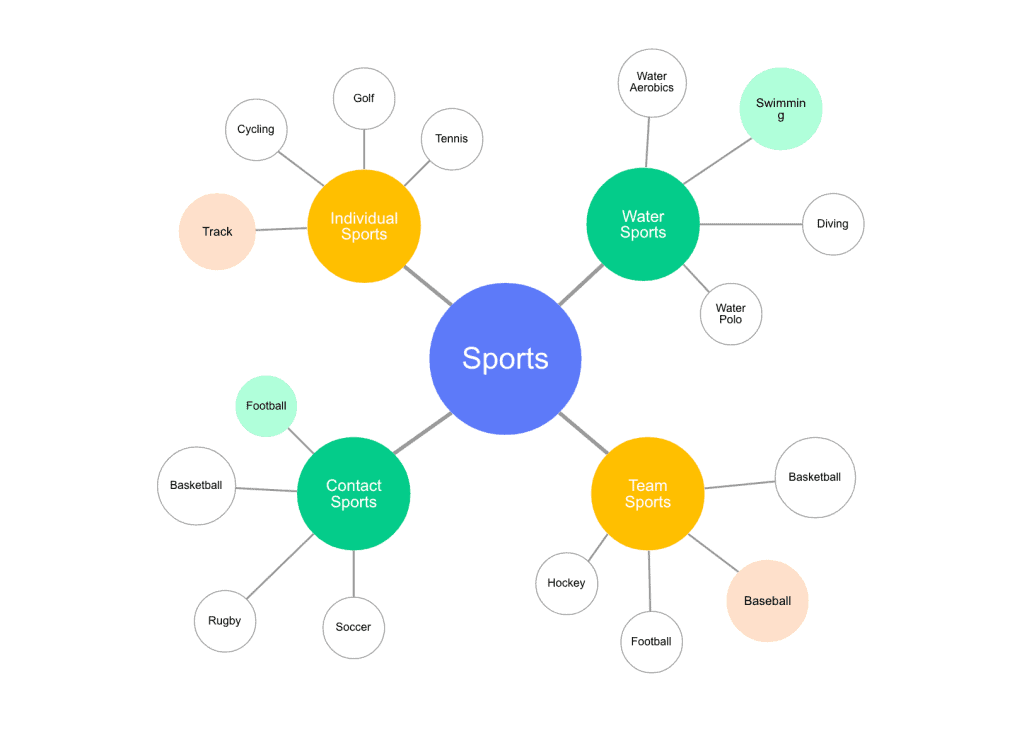
4. SWOT分析
優勢、劣勢、機會、威脅。 SWOT分析 是許多業務流程的計劃和執行的關鍵組成部分。
- 我們的強項 – 這些是專案、產品或業務的內在優勢。優點可能包括獨特的賣點 (USP) 或競爭對手所不具備的特定資源。
- 弱點 – 在業務中,了解您的內部弱點同樣重要。 是什麼阻礙了你的競爭力? 這些可能是特定的資源或技能。 了解你的弱點為解決這些問題提供了機會。
- 機會 – 哪些外在因素可能對你有利?這些因素可能是趨勢、社區觀點或法律法規。
- 威脅 – 哪些負面的外部因素可能不利於您的想法或項目? 同樣,這些可以是總體趨勢、法律甚至是特定行業的觀點。
通常,SWOT 分析被繪製為 4 個像限,每個像限中包含 S、W、O 和 T 之一。 然後利益相關者有一個 集體頭腦風暴 記下與每一點有關的想法。 這有助於做出短期和長期戰略決策。
SWOT 分析是任何業務的主要內容,可以幫助領導者了解如何在未來的計劃會議中構建有效和適當的頭腦風暴圖。
💡 尋找一個 免費的頭腦風暴模板? 看看這個 免費、可編輯的 SWOT 分析表.
5. PEST分析
雖然 SWOT 分析專注於可能影響業務規劃的外部和內部因素,但 PEST 分析更側重於外部影響。
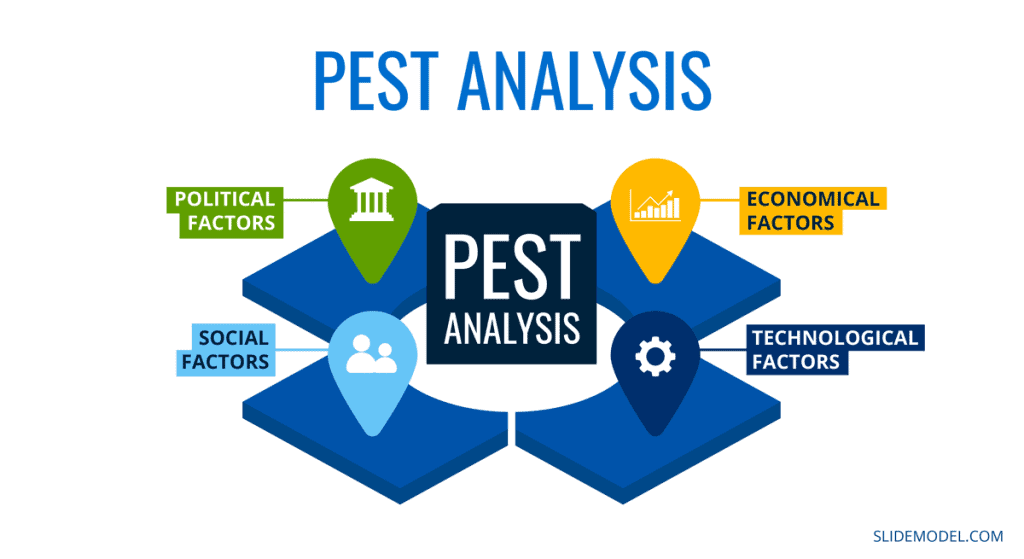
- 政治 – 哪些法律、法規或規定會影響你的想法?這些可能是與人員配備或僱用相關的必要標準、許可證或法律,你的想法需要考慮這些因素。
- 經濟—— 經濟因素如何影響您的想法? 這可能包括行業的競爭程度、您的產品或項目是否是季節性的,甚至是總體經濟狀況,以及人們是否真的在購買像您這樣的產品。
- 社會的 - 社會分析關注的是社會觀點和生活方式,以及這些觀點和生活方式對你的想法的影響。社會趨勢是否傾向你的想法?公眾有什麼偏好嗎?你的產品或想法是否可能引發任何爭議或道德問題?
- 技術 – 是否有任何技術考慮? 也許你的想法很容易被競爭對手複製,也許還有技術障礙需要考慮。
#6 –魚骨圖/石川圖
魚骨圖(或石川圖)旨在確定與特定痛點或問題相關的因果關係。 通常,它用於找到問題的根源並產生可用於解決問題的想法。
以下是製作方法:
- 確定核心問題,並將其記錄為規劃區域中心右側的「魚頭」。從該問題畫一條水平線,貫穿該區域的其餘部分。這便是圖表的「脊柱」。
- 從這個“脊椎”畫出對角線“魚骨”線,以確定問題的具體原因。
- 您可以從核心“魚骨”創建較小的外部“魚骨”,在其中寫下每個主要原因的較小原因。
- 分析您的魚骨圖並標記任何關鍵問題或問題區域,以便您可以有效地計劃如何解決它們。
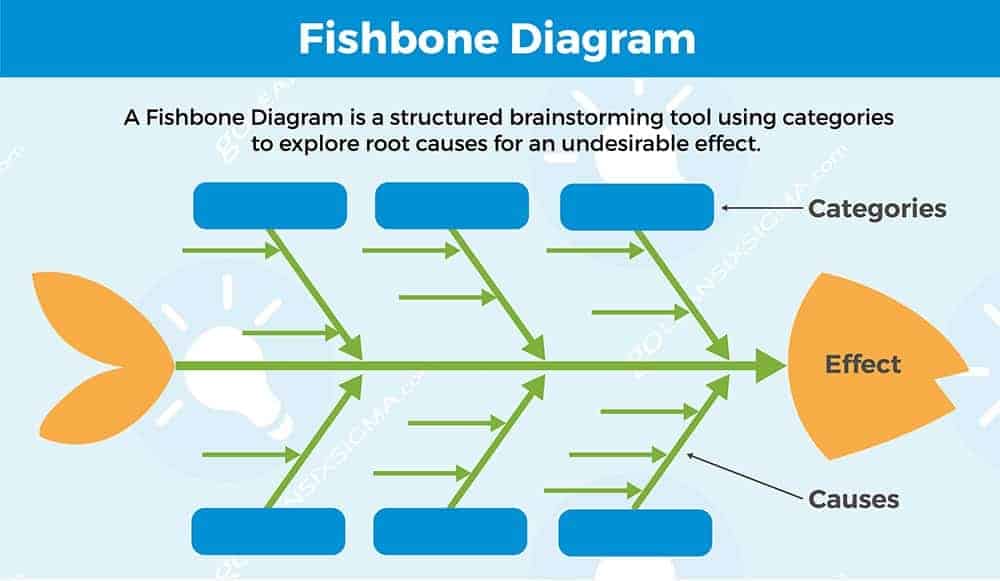
#7 – 蜘蛛圖
蜘蛛圖也與頭腦風暴圖非常相似,但可以在其結構上提供更多的靈活性。
叫做 蜘蛛 圖表之所以被稱為圖表,是因為它有一個中心思想(或想法),以及由此引出的多個想法。從這個角度來看,它與氣泡圖和心智圖非常相似,但通常條理性略差,邊緣也略顯粗糙。
許多學校和教室將使用蜘蛛圖來鼓勵協作思維,並向學齡學習者介紹想法和規劃技巧。
#8 – 流程圖
腦力激盪圖-腦力激盪圖,或流程圖,對於任何需要規劃專案或路線圖的人來說都很熟悉。它們本質上是以可視化的方式描述一項任務如何引導另一項任務。流程圖允許產生想法,並且可以作為頭腦風暴圖的替代方案。 它們提供了更多的“時間線”結構和清晰的任務順序。
流程圖有兩種非常常見的用途,一種更嚴格,一種更靈活。
- 處理流程圖: 過程流程圖描述了特定的操作以及它們需要完成的順序。 這通常用於說明流程或嚴格的操作功能。 例如,流程圖可能會說明在您的組織中提出正式投訴所需的步驟。
- 工作流程圖: 雖然流程圖是信息性的,但流程圖更多地用於計劃並且可以更靈活。 工作流程或路線圖將說明流程下一階段開始所需採取的步驟。
這種類型的圖表在需要跟踪大型項目並了解它們在哪里工作以及需要做什麼來推動項目前進的機構和開發企業中尤其常見。
#9 – 親和圖
頭腦風暴圖! 親和圖用於以更有條理的方式收集大量想法、數據或信息。 它被廣泛用於對訪談、焦點小組或測試中的數據進行分組。 將其視為對您的頭腦風暴想法進行分類 在他們h之後已經創建。親和圖通常會出現在非常流暢和廣泛的頭腦風暴會議之後,在這些會議上已經產生了很多想法。
這就是親和圖的工作原理:
- 單獨記錄每個想法或數據。
- 確定共同的主題或想法並將它們組合在一起。
- 在更大的“主組”下一起查找組和文件組中的鏈接和關係。
- 重複此操作,直到剩餘頂級組的數量可控。
#10 – 星爆
頭腦風暴圖! Starbursting 是“5W's”的可視化 – 誰,何時,什麼,在哪裡,為什麼(以及如何) 並且對於在更深層次上發展想法至關重要。
- 在六角星的中心寫下你的想法。 在每個點中,寫出一個 “5W+如何”.
- 鏈接到星的每個點,寫出由這些提示引導的問題,讓你更深入地了解你的中心思想。
雖然也可以在企業中使用星爆,但在課堂環境中非常方便。 作為教師,幫助學生進行論文規劃和理解批判性分析,這些結構化提示對於幫助學生參與和分解問題或文本至關重要。
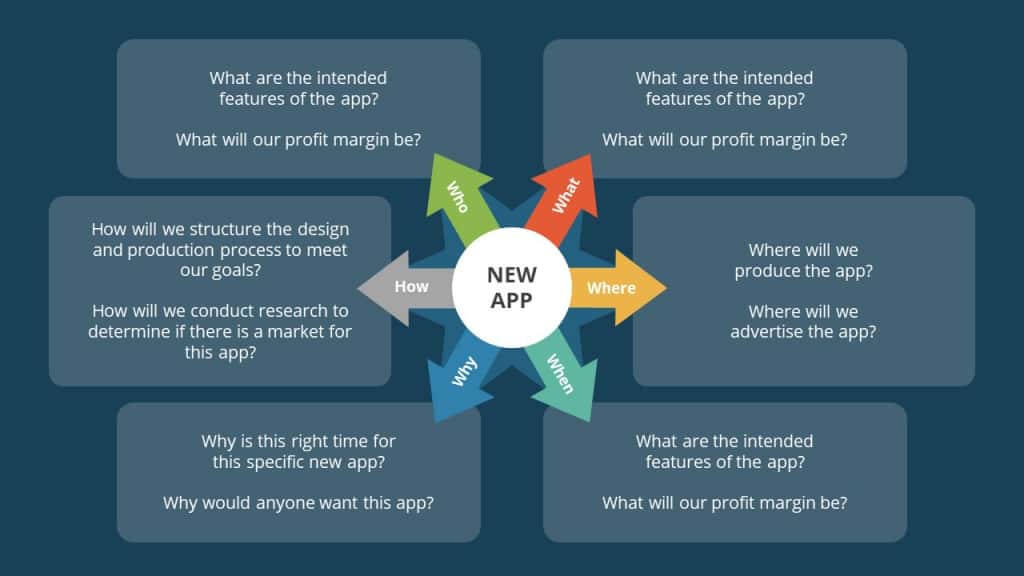
#11 – 逆向腦力激盪
腦力激盪圖!逆向腦力激盪很有趣,它要求你跳脫固有思考模式。參與者需要發現問題,並從中設計出解決方案。
- 將主要的“問題”或陳述放在規劃區域的中心。
- 寫下會導致或導致此問題的事情,這可以是多層次的,範圍從大到非常小的因素。
- 分析您完成的反向頭腦風暴圖並開始製定可行的解決方案。
常見問題(FAQ)
什麼是頭腦風暴圖?
頭腦風暴圖就是這些 不同形式的頭腦風暴其中最受歡迎的是心智圖,還有很多其他工具可以釋放偉大的想法,特別是當你運行一個 虛擬頭腦風暴.
有哪些腦力激盪圖範例?
SWOT分析、魚骨圖、反向腦力激盪、蜘蛛圖和反向腦力激盪
什麼工具用於頭腦風暴?
有許多工具可以在線上創建,包括 AhaSlides、StormBoards、FreezMind 和 IdeaBoardz
